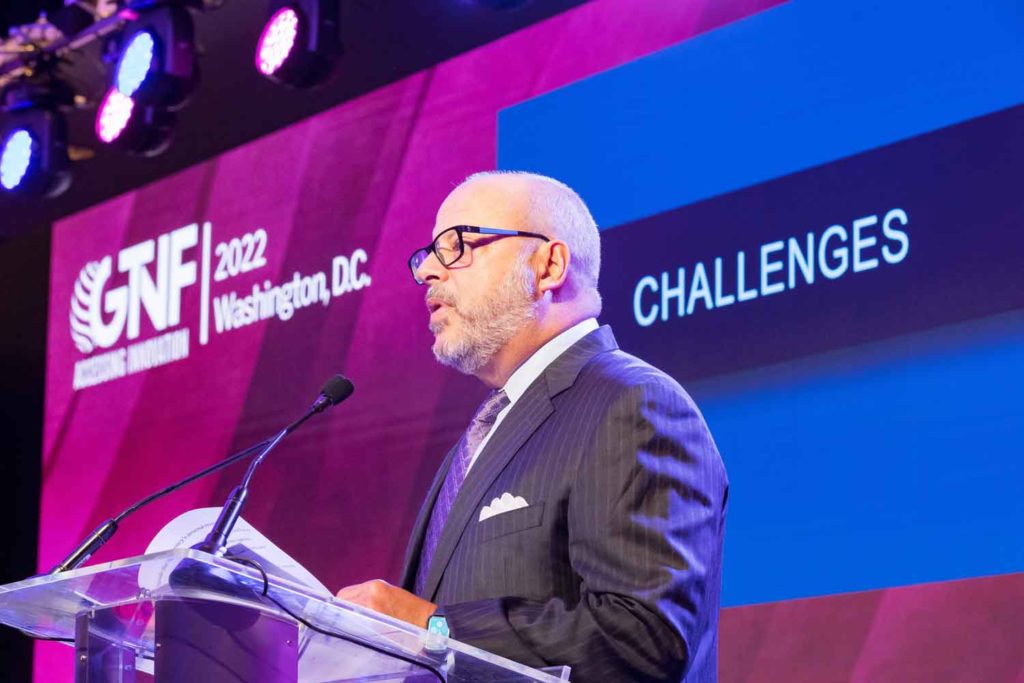
With a new partner in heated-tobacco products, Altria prepares to compete in a radically different U.S. tobacco market.
By George Gay
During the GTNF in September, Bonnie Herzog of Goldman Sachs admitted that she had been wrong about eight years ago to predict that within 10 years, sales of reduced-risk products (RRPs) would overtake those of combustible cigarettes on the U.S. market.
To my way of thinking, no discredit attaches to this admission because there was no shame in having been wrong in this prediction—at least no shame that could attach to Herzog. What sane person would have argued with her? Eight years ago, after decades of hand-wringing by politicians, health professionals and society at large over the deaths and diseases caused by the consumption of combustible cigarettes, surely everybody was, as a matter of urgency, going to get behind these RRPs to ensure they were developed to their full potential, their benefits were widely communicated, and they were made readily available at prices that were attractive to smokers. After all, here was a solution to a long-term, seemingly intractable problem that would involve almost no outlay from the public purse. It had to be embraced by people of every political stripe. Yeah, right.
Basically, Herzog made two mistakes eight years ago. She ignored the rule that says you never make predictions about events that will unfold within your lifetime. And, I guess, she assumed the U.S. is run on a set of straight, rational rails rather than, like the rest of the world, along a meandering path of hypocrisy.
Despite the dog’s breakfast that has been made of the U.S. market for RRPs, the battle for this market was one of the major factors considered by analysts when, during the GTNF investor panel, they considered the relative merits of investing in the U.S.-listed tobacco companies, Altria and Philip Morris International. It was by no means the only factor, but I would like to concentrate on it because it demonstrates the dangers of making predictions.
Unclear and Unraveling?
During the panel discussions, PMI was said by one of the panel members, Pam Kaufman of Morgan Stanley, to be unique within the tobacco industry in respect of the success it had enjoyed in executing its strategic transformation. The company now generated 30 percent of its revenue from reduced-risk, smoke-free products, and the Swedish Match acquisition was going to be a game changer, helping PMI to move to a position where 50 percent of its revenues came from smoke-free products by 2025.
Specifically, on the U.S. market, Swedish Match could be used as a distribution platform for PMI’s heated-tobacco product (HTP), IQOS, bypassing the existing distribution agreement with Altria, which, at the time of the panel discussion, was not in operation because a U.S. International Trade Commission ruling in response to a patent infringement challenge by BAT’s U.S. subsidiary, Reynolds, was preventing IQOS being made available on the U.S. market.
At the same time, Altria’s strategy around RRPs was seen by Kaufman as being unclear and unraveling. Altria, which was not known for its internal development, she said, lacked a clear reduced-risk exposure because it was reliant on its stake in Juul, with which it had a no-compete agreement and which was facing a lot of challenges, and because of its agreement with PMI on IQOS, which was in question. Kaufman said she was certain that Altria was now investing greater resources than previously in RRPs, but, while it was talking about showing a new HTP by the end of this year, this was far from commercialization as the product would have to go through a Food and Drug Administration premarket tobacco product application process. PMI was years ahead of Altria, which was in a tough position.
Herzog was more upbeat on Altria’s future in the field of RRPs. She said that people underestimated Altria because it didn’t share as much information as other companies did. She reminded her audience that PMI and Altria were once one company and that Altria owned a lot of the early technology and rights to IQOS, so, maybe, she suggested, given the time when Altria was distributing and selling IQOS for PMI in the U.S., there had been some “learnings and understandings.” She questioned whether it was possible that Altria had built a better product.
Herzog was more positive, also, about Altria’s ability generally to compete with PMI coming onto the U.S. market through Swedish Match, citing the fact that Altria had dealt with a formidable competitor before: with BAT coming in fully with Reynolds. It was a question of how Altria could transform its product portfolio more toward RRPs, whether those products were already on the market, like On! and those in which it had an interest through its stake in Juul, or the result of things on which it was working. Altria was in the final stages of design of its own oral tobacco and its own HTP.
Herzog conceded that it was going to take time to bring some of those products to market, given the processes required by the FDA, but it was nevertheless the case that Altria had other products in its arsenal that it could ultimately leverage.
Rapid Developments
Writing this story toward the middle of November, it’s obvious that two months can be a long time in respect of the U.S. market for RRPs. Since the panel discussions were held, PMI has secured its takeover of Swedish Match. PMI and Altria have agreed on terms under which Altria will receive from PMI $1.7 billion (on top of $1 billion paid at the inception of the IQOS distribution agreement) to relinquish, from the end of April 2024, its right to distribute IQOS in the U.S. on behalf of PMI. Altria has, while maintaining its economic interest in Juul, which is currently appealing against an FDA order to remove its products from retail shelves, extricated itself from its no-compete agreement and so is free to bring its own e-cigarettes to market or to explore acquisitions in this field. And Altria has signed a joint venture agreement with Japan Tobacco to market HTPs in the U.S. with Ploom-branded devices and Marlboro-branded consumables. They also signed a long-term, nonbinding global memorandum of understanding to explore commercial opportunities for a wide range of RRPs.
The question is how much of a difference these developments will make to the U.S. market for RRPs, and especially to Altria, whose future has been painted as being bleak by some observers, even after these recent developments. My guess—and this is not a prediction—would be that these developments, on their own, will make little difference immediately and perhaps for some time. IQOS, which has been granted a modified-risk status under which consumers may be given certain information, such as that the product generates lower levels of harmful chemicals than combustible cigarettes, is still not available for sale in the U.S., though, clearly, it is likely to reenter the market relatively soon.
At the same time, it is likely to take considerably longer to put Ploom and a new HTP from Altria through the FDA procedures necessary for market commercialization. But it is worth bearing in mind a point made by Rupert Wilson of Strategic Business Consulting during the panel discussion. HTPs, he said, had done well on markets where e-cigarettes, for whatever reason, were not a major market contributor, such as Japan, but less well on markets where e-cigarettes had been well received, such as the U.K. The U.S. is a strange market in that e-cigarettes are available but development of them has been held back by regulations, but I would guess that there are just enough e-cigarettes—and other RRPs—available to mean the U.S. is not going to simply become a battleground for HTPs. They will become a significant, but not an exclusive, part of the RRP market.
There are other factors in play that are probably more important. PMI, which has concentrated heavily on HTPs, is expanding its RRP offering, but even with the help of Swedish Match, which is experienced in dealing with FDA applications, these products will take time to clear FDA hurdles. And Altria could presumably acquire a vaping company that has devices already approved for the U.S. market.
Some observers point to the fact that Altria, unlike PMI or Swedish Match, is heavily exposed to the U.S. market for combustible cigarettes, which is in decline, especially the premium sector of that market, which seems like not a good place to be during a cost-of-living crisis. But evidence was presented during the panel discussion that demonstrated how, in the past, Altria had been able to increase profits significantly in the face of plummeting cigarette volumes caused in part by steeply rising prices.
Overall, I tend to agree with Jon Fell of Ash Park Management, who, during the panel discussions, while not dismissing the competitive challenge being thrown down by the arrival of PMI on the U.S. market, said that companies already on that market were highly competitive themselves and that it would be rash to assume they could be brushed aside.
It would surely also be rash to make predictions when who knows what developments might be announced in the future. During the session usually devoted to possible mergers and acquisitions, the GTNF panelists spent nearly all the available time talking instead about companies investing in R&D, forming alliances, finding new technology partners, bringing people in from other industries to provide new perspectives and moving into new business areas. Something unforeseen must come out of that.




























